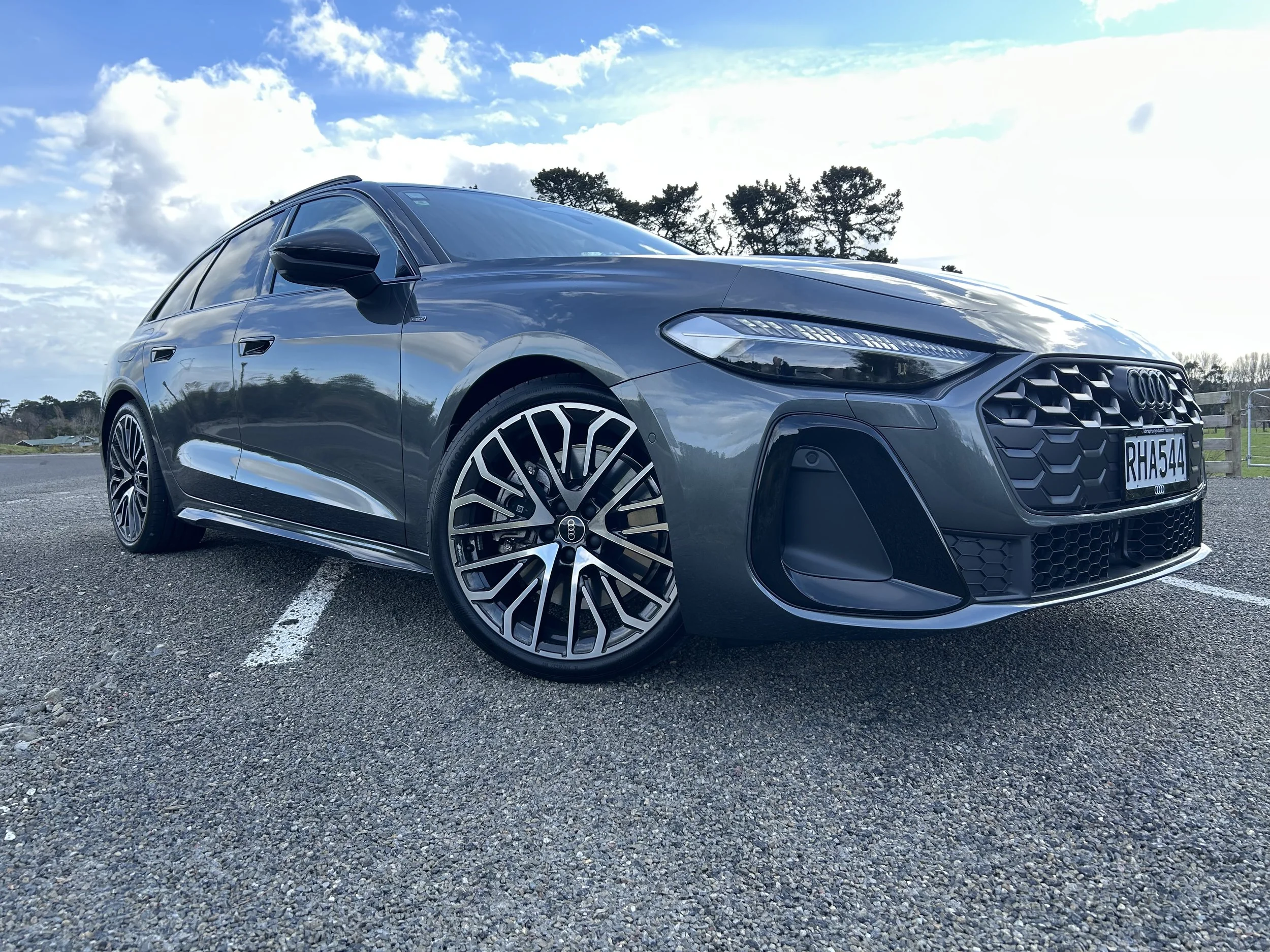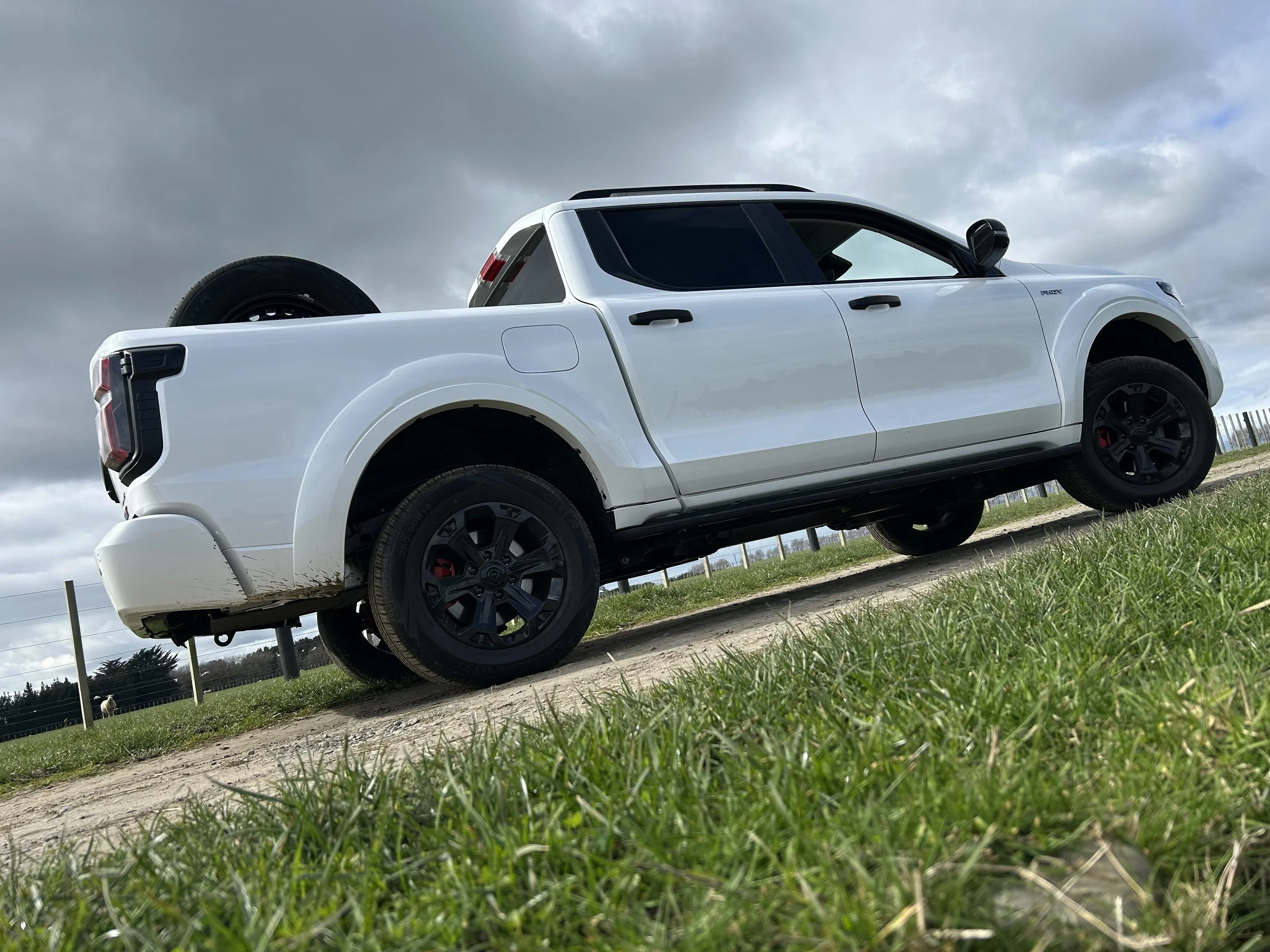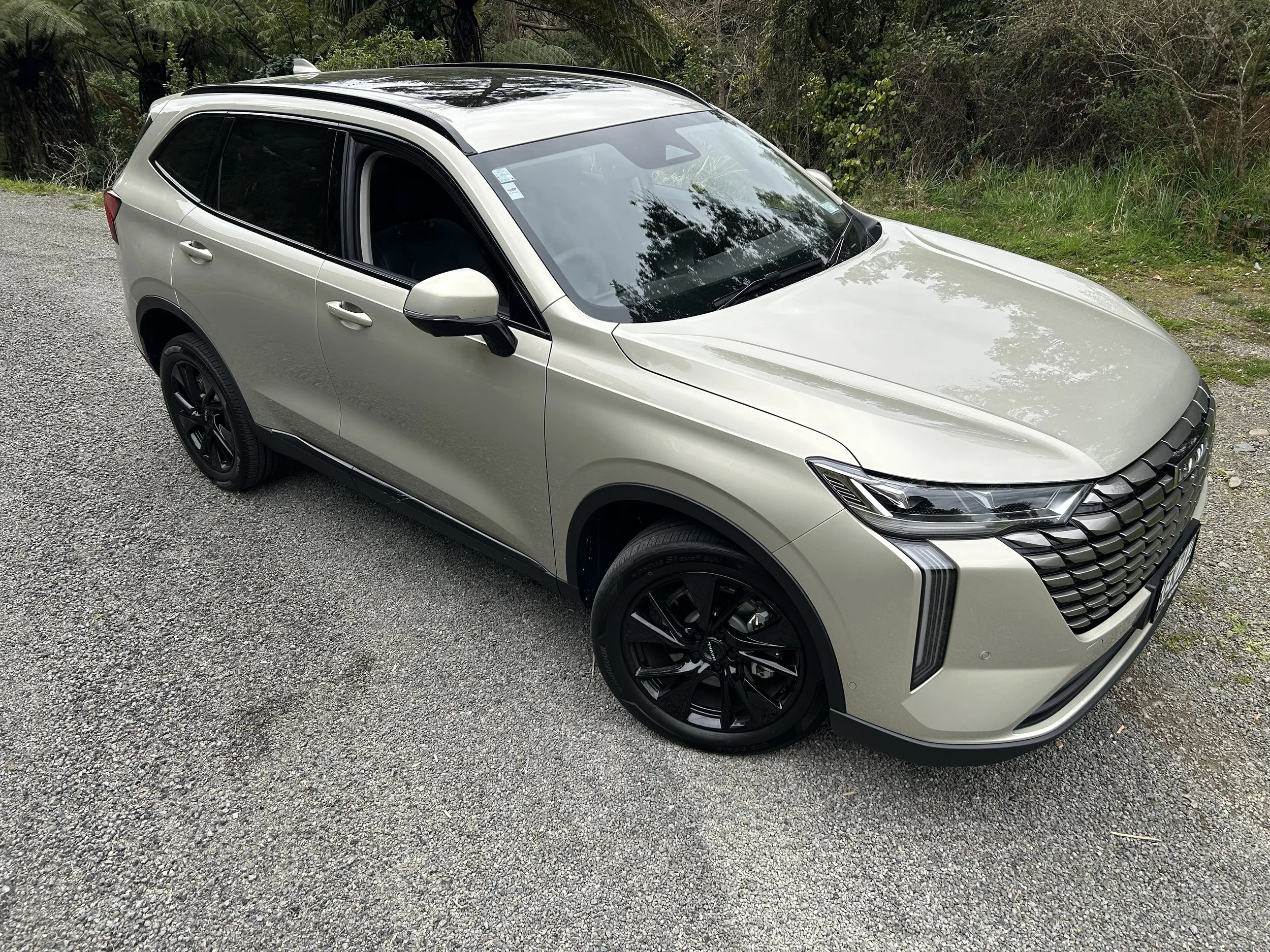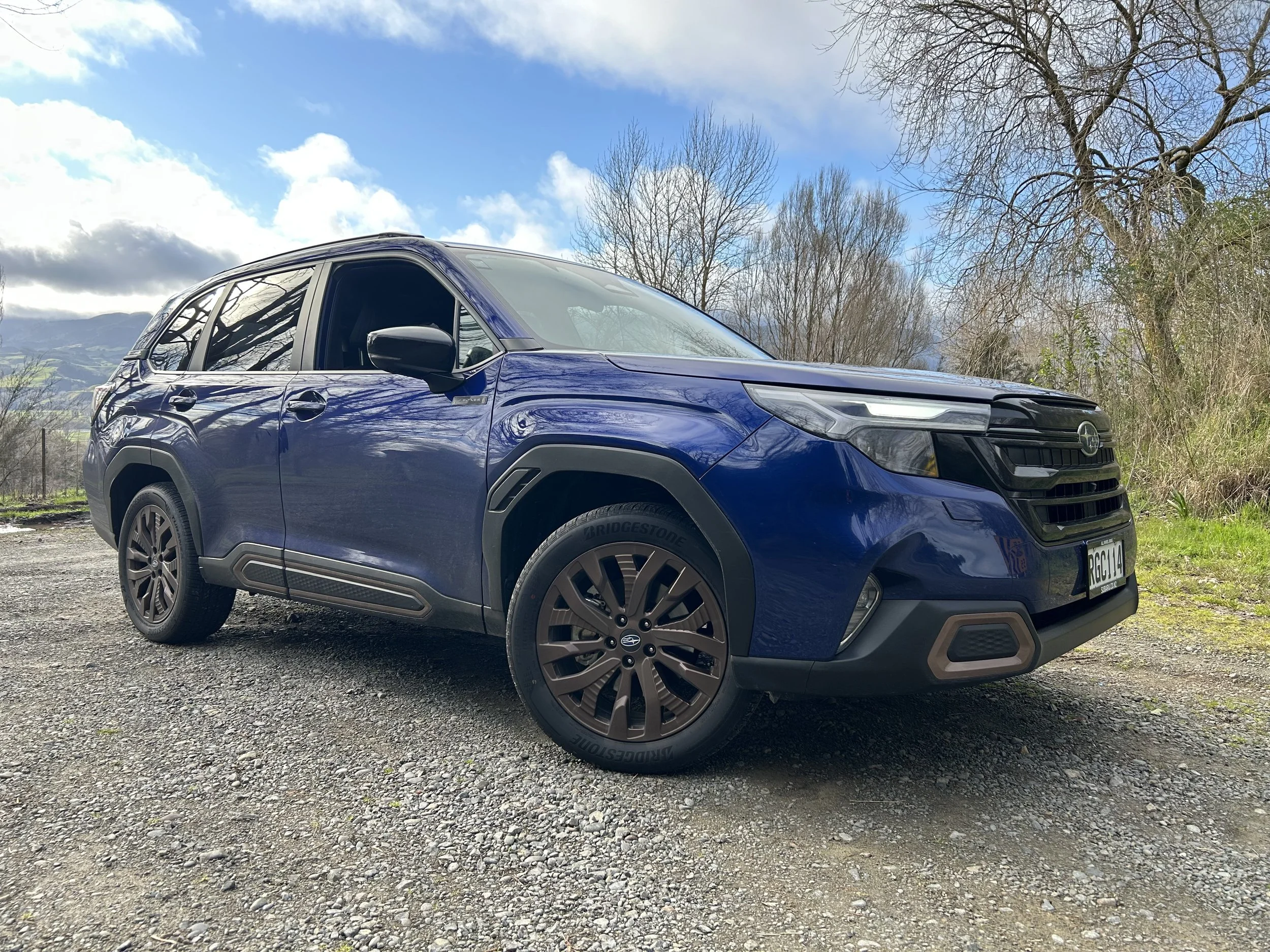Toyota Land Cruiser 70-Series: No time for dying
/Very probably the longest-lived vehicle offered in New Zealand and potentially the oldest machine that Toyota still builds is back on sale – and it’s here purely for work.
NOW it’s back, how long before it departs for good?
Asking that question of any new vehicle might seem downright silly, or at least strange, if not insouciant.
But, then, the ‘new’ Land Cruiser 70 Series whose return to sale from this week has been enable by a quite remarkable rebirth is not any ordinary rig, is it?
No other vehicle produced by Japan’s No.1 wears its age quite so obviously this mega mud-slugger.
You could be 100 metres’ clear of tyre-kicking distance and still be able to identify from its t-squared profile alone that it is somewhere between ‘quite’ and ‘extremely’ old in design.
Spending the weekend with an entry single cab LT example has reinforced it’s much the same in driving feel.
Regardless that a myriad of technology changes box-tick some astounding achievements – the most important being an adoption of vehicle stability control, without which it could not be allowed on sale, and the most impressive (given that it’s on a ladder frame chassis whose elemental design dates back to the 1950s) being elevation to a five-star crash test safety standard – from behind the wheel this is still as yesteryear now as it seemed a decade ago.
Actually, make that ‘as it seemed in 1990’, because that’s the year when this generation first came out - though some would say using that descriptive is a stretch, as the line that emerged then was really a revision of the vehicle that launched in 1984 - so maybe it’s not inappropriate to add more years …
Anyway, now many decades’ age attaches, it’s a new issue of almost ancient. And that’s not necessarily a bad thing. A vehicle that could be considered the Colin Meads of utes - not here to play silly buggers – trades on its familiarity, simplicity and back to the bones toughness.
Toyota New Zealand itself makes no bones about what roles awaits the revised lineup: Mining, farming, forestry and rural contracting are the major ones. Recreation? General manager of sales Steve Prangnell doesn’t even have to give that one any thought: “We’d say no. We don’t think any will be bought for that.”
It’s here to work. Those who want something for play, the school run or even just to take to town will choose a Hilux - up to 70 percent of all diesel doublecab versions of the country’s second-most popular one-tonne ute go to private buyers with recreation in mind.
None of these people will be thinking about the big bro Land Cruiser, which is why the brand is already picking that all 150 predicted sales in 2017 will be to outfits that will put them wholly to work.
Some will go underground, some will be sent to the tops of our country’s highest sheep farms, in North Otago, and all will be toiling mainly in four-wheel-drive, potentially with the differentials locked, through snow and sludge say in, day out.
The prospect of them seeing all work and no play has driven the distributor to dress the five-strong lineup – two LTs in $75,780 single cab and $$79,380 double cab format, a couple LXs in the same configurations (for $5200 more) and a $84,980 Troop Carrier wagon – in hard-wearing trims and to stay sensible with the niceties.
The LT, for instance, has picked up a nice stereo with Bluetooth – that’s new - and a display that acts as a screen for a reversing camera (something else that has never considered for the rig). But it still lacked central locking and floor mats and has grey-painted 16-inch steel rims, wind-up windows and a basic air con with slide control ventilation that I last recall from my mother’s 1979 Corolla.
The LXs are apparently a bit fancier – though these, too, retain cloth seats – whereas the Troopie has given up on all sensitivities. The five-door five-seater edition has been dropped completely while the model that used to present as a seven-seater edition loses all but the front chairs and will position as a sort of all-terrain van. “We’ve taken the rear seats out so it’s got a massive, customisable cabin.”
On the mechanical side, it retains that 4.5-litre turbodiesel V8 pumping out 151kW at 3400rpm and 430Nm at 1200-3200rpm. Fuel economy has improved, from 11.5 litres per 100km previously to 10.6 now and you’ll go far, with all utes having a 130 litre tank while the wagon has twin 90-litre tanks. More importantly (again, so it can continue on sale) it meets Euro Five emissions now, with smut output falling to 281 grams per kilometre from 304 previously, thanks to the adoption of a diesel particulate filter.
The implementation of ESP – which is a proven life-saver designed to keep a vehicle from toppling over in an avoidance manoeuvre (a theory I would not seek to attempt in this vehicle) – is what gets it back into play.
Vehicle Stability Control, as Toyota prefers to call it, became a Government-mandated must-have for all new vehicles on sale since July 1, 2015; the 70-Series at that time became the only Toyota to fall onto a black list (with a few other off-roaders) and, ultimately out to pasture, though that didn’t happen until several months ago because TNZ had cannily imported 250 units prior to – and exempted from - the ESP deadline. All but 85 of those were sold in the last five months of 2015.
Re-engineering the 70 to adopt this dynamic aid would have been a massive undertaking, Prangnell suggests, one that any brand less powerful than this one probably would not have attempted.
It says much about Toyota that they didn’t simply stop there, but also used the VSC inclusion to allow implementation of some other tech that has never been part of the 70-Series lexicon. Thus it also has Active Traction Control (A-TRC), Electronic Brake-force Distribution (EBD), Hill-start Assist Control (HAC) – which lends a hand for uphill driving as well as offering the usual downhill assist - and a Brake Assist (BA).
In addition to those implementations, they also improved the rig’s crash testing performance, which has not previously been stellar, especially in single cab format. Ironically the version that will likely achieve 50 percent of next year’s volume was the one that pulled the previous, pre-VSC line down to a three-star result that, these days, is considered a poor showing even for a large, rudimentary heavy mud-slugger.
That it is now five-star and yet still running with chassis rails and no car-like crush zones is a stunning achievement, one that only came about from Toyota having quite literally made 1001 small changes, more to that two-seater version than the others.
The most obvious visual differences are up front; the nose is subtly reshaped, with a fatter bumper, while the bonnet line now has a more prominent power dome. Actually, it’s about people power: There are no (major) changes under the bonnet that necessitates the larger bulge. It’s purely to provide increased pedestrian safety and makes tangible difference, even with such a tall, bluff frontage.
Within that workmanlike cabin, more car-like features. Seat belt pretensioners, which have been in cars (and other Cruisers) for years, finally arrive. So too side body and head protecting airbags.
It’s the little things, too: While the front seats are more comfortable, their reshape – and the way they have been mounted – also enhanced, if minutely, the overall ANCAP rating. Same goes for extra under-dash padding. The grab handle that used to run across the dash for the front-seat passenger has gone. On the bright side, the safety spruce-up triggers allowance for something the model has always cried out for, a telescopic steering column. One last little tweak was inclusion of an emergency stop signal so that, under heavy stopping, the brake lights flash. A small difference that nonetheless “scores points under ANCAP.”
Beyond that, the chassis material has been upgraded to a harder ultra-high tensile steel.
Driving-wide, it’s still noisy and slow, but introduction of a 15 percent taller top (fifth)gear ratio reduces some of the touring roar, with it showing just 2000rpm at 100kmh against 2200rpm previously. Ah, yes, it’s still only available in (still five-speed) manual gearbox format: Any chance of an automatic option seems slight at best. Suspension fine tuning –made easier because there’s less flexing with the stiffer chassis – makes the ride less chunky, apparently.
Off-road is where this model really shines and it’s potentially become even more unstoppable, with the front and rear electro-mechanical diff locks backing a newly introduced A-TRC (Active Traction Control) system which replaces the rear limited slip diff and is automatically adjusted for use in H2, H4 and L4 ranges. Rotating the locker dial beside the steering wheel to select either rear locker or both front and rear lockers will get you out of most off-road situations. It now has hubs that are automatically engaged in place of the previous, long standing manual locking versions, but with a manual locking system – requiring use of the wheel brace.
All this just for us? Of course not. In the grand scheme, we’re as inconsequential as the 70 Series is to the Toyota world as a whole (given that it has never been in Europe and is unlikely to return to North America).
What keeps this model in production is Middle Eastern interest – and, no, not with those interest groups that press-gang vehicles such as these into action as heavy weapons platforms. Oman has taken 141,000 since 1990 then follows Saudi Arabia, which has moved 100,000 in that period.
Then comes Australasia, but it’s more than Aus part: of the 93,000 sent down this part of the globe over the past 26 years, only 3000 have come here.
On the subject of Aus interest, we need to thank primary 70 Series employer and mining giant BHP Billiton for convincing Toyota Motor Company to sharpen up the safety side. Across the water, as here, health and safety processes are such that anything with less than five stars struggles to make the cut for workplace acceptance. Says Prangnell: “They (BHP) actually flew to Japan to request TMC to bring it up to five star ANCAP because it’s such a crucial part of their business.”
Toyota Japan has yet to share how much it spent on this rejig. “I’d love to know and I’d love to tell you … it’s not a five-minute job. It clearly took quite a lot of re-engineering.”
That effort sustains his personal thought that the old warhorse will be around for years yet, bolstering up the newer – but now teenaged – Land Cruiser 200-Series wagon which, though much more family-friendly than the 70-Series, is also looking to be a lot less ‘car-like’ than anything else in the luxury SUV sector.
So is the Land Cruiser concept overall falling out of favour? A prediction of just 300 200-Series sales for next year suggests the demand for that model is also diminished, but Prangnell insists there is no reason for TNZ to think those hard-core offers are no longer wanted.
“The market is always going to have a space for these vehicles. Absolutely.” He says the Lexus LX (a super glammed 200) has taken off since it adopted the 200’s diesel.
“People still need this kind of vehicle,” he proposes.
And 70-Series holds one ace still, in respect to towing. On the face of it, the 3.5-tonne towing ability seems matched by those modern one-tonne utes. But not really, he reminds.
“It’s also 3.5 tonne towing when it is at its maximum gross vehicle mass, so it can actually do six tonnes, and it is legal. Whereas when you look at some other stuff, like a light truck, it might be rated 3.5 tonne but when it has four guys and all their gear in it, then it cannot tow that. But this thing can.”
“It’s niche, but we’re confident of its ongoing sales ability.”
So, as we wrap up a year that started with the Land Rover Defender – surely a template for the 70-Series – finally headed in the pantheon of history, Toyota remains committed to keeping the faith.
Never say die, huh?
















